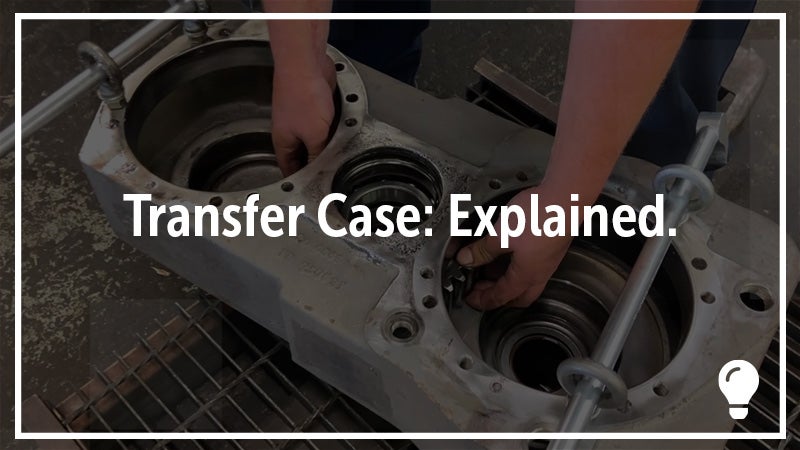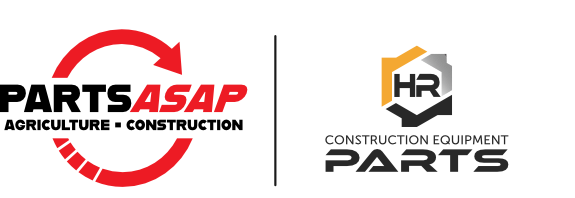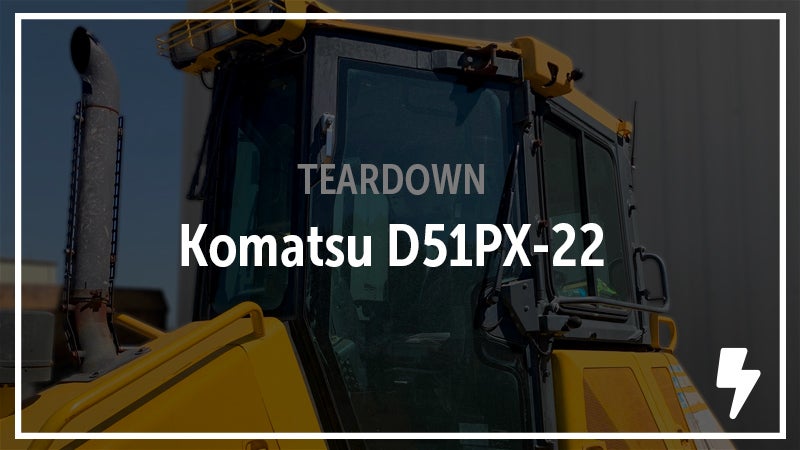
What is a Transfer Case with Transfer Case Diagram
A transfer case (or transfer box) is a common component in machines from the the 4x4 truck you use for rock crawling to the gargantuan off-highway truck carrying giant loads of earth to and from a construction site. You'll find a transfer case uses many of the basic principles of power, torque, and gearing to accomplish its goals and shares a number of concepts and components with other mechanical parts. As part of the H&R Construction Equipment Parts Knowledge Base series, we hope you find this basic primer on transfer cases interesting and informative, regardless of your current parts knowledge or your next steps. Read on for our introduction to the transfer case.
What is a transfer case?
Put simply, the transfer case (or transfer box) divides the power from the transmission and delivers that power to each of the powered axles. A transfer case can accomplish this through either gears or a chain drive. While a chain drive system decreases weight and noise, in high torque necessary applications like heavy construction equipment, gears are preferred as they are more reliable and more durable.
How does a transfer case work?
In a vehicle or machine with a single axle an engine can use a single driveshaft to deliver power to the axle, but in a machine with multiple powered axles power must be divided and sent to each axle. This is the function of the transfer case -- to transfer power to each axle.
While transfer cases are common to multiple-powered axle vehicles, in heavy construction equipment transfer cases also often include one or more sets of low range gears to provide the additional torque needed to meet their specific demands.

What are the parts of a transfer case?
Common parts in a transfer case include bearings, gears, shafts, flanges, and the transfer case housing. Seals, gaskets, and o-rings ensure the complete transfer case is properly sealed to hold transfer case oil and that parts fit together smoothly and soundly.
Where on the machine (or vehicle) is a transfer case located?
A transfer case is located between the transmission and the axles and it is connected to each axle by a driveshaft.

What are the signs of a bad transfer case?
With proper care and maintenance, a well-built and designed transfer case will provide a long life of great work, but given the intense, torque-heavy requirements of the transfer case it should be monitored for failure. Signs of a failing transfer case include:
- Grinding or humming noises that originate from under the machine
- Erratic movement with the machine, including slipping or lurching
What to do if a transfer case goes bad?
A failing transfer case can be replaced or even repaired, if possible. Because of the size and speciality of construction equipment transfer cases, a specialized shop is often needed to recondition and rebuild a heavy equipment transfer case.
Interested in watching a transfer case be rebuilt? Watch an H&R parts expert rebuild a transfer case. And sign up to have these updates (and more interesting construction equipment parts news) delivered straight to your inbox.



